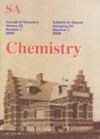Controlling the Lithium Intercalation Voltage in the Li(Mn1-xNix)2O4 Spinel via Tuning of the Ni Concentration: a Density Functional Theory Study
IF 1
4区 化学
Q4 CHEMISTRY, MULTIDISCIPLINARY
South African Journal of Chemistry-Suid-Afrikaanse Tydskrif Vir Chemie
Pub Date : 2021-01-01
DOI:10.17159/0379-4350/2021/v74a2
引用次数: 2
Abstract
ABSTRACT LiMn2O4 spinel is a promising cathode material for secondary lithium-ion batteries. Despite showing a high average voltage of lithium intercalation, the material is structurally unstable, undergoing lowering of the crystal symmetry due to Jahn-Teller distortion of the six-fold Mn3+ cations. Although Ni has been proposed as a suitable substitutional dopant to improve the structural stability of LiMn2O4 and enhance the average lithium intercalation voltage, the thermodynamics of the Ni incorporation and its effect on the electrochemical properties of this spinel material are not yet known. In this work, we have employed density functional theory calculations with a Hubbard Hamiltonian (DFT+u) to investigate the thermodynamics of cation mixing in the Li(Mn1_xNix)2O4 solid solution. Our results suggest LiMn1.5Ni0.5O4 is the most stable composition from room temperature up to at least 1000 K, in agreement with experiments. We also found that the configurational entropy is much lower than the maximum entropy at 1000 K, indicating that higher temperatures are required to reach a fully disordered solid solution. A maximum average lithium intercalation voltage of 4.8 eV was calculated for the LiMn1.5Ni0.5O4 composition, which is very close to the experimental value. The temperature was found to have a negligible effect on the Li intercalation voltage of the most stable composition. The findings reported here support the application of LiMn1.5Ni0.5O4 as a suitable cathode material for lithium-ion batteries, with a highly stable voltage of intercalation under a wide range of temperatures. Keywords: Spinel, equilibrium concentration, mixing thermodynamics, solid-state chemistry and lithium voltage of intercalation.通过调节Ni浓度控制Li(Mn1-xNix)2O4尖晶石中的锂嵌入电压:密度泛函理论研究
LiMn2O4尖晶石是一种很有前途的二次锂离子电池正极材料。尽管显示出较高的锂插层平均电压,但材料结构不稳定,由于六倍Mn3+阳离子的Jahn-Teller畸变导致晶体对称性降低。虽然Ni被认为是改善LiMn2O4结构稳定性和提高平均锂嵌入电压的合适替代掺杂剂,但Ni掺入的热力学及其对尖晶石材料电化学性能的影响尚不清楚。本文采用哈伯德哈密顿量(DFT+u)的密度泛函理论计算,研究了Li(Mn1_xNix)2O4固溶体中阳离子混合的热力学。结果表明,LiMn1.5Ni0.5O4在室温至至少1000 K范围内是最稳定的成分,与实验结果一致。我们还发现构型熵远低于1000 K时的最大熵,这表明需要更高的温度才能达到完全无序的固溶体。计算得到LiMn1.5Ni0.5O4的最大平均插锂电压为4.8 eV,与实验值非常接近。发现温度对最稳定成分的插锂电压的影响可以忽略不计。本文的研究结果支持了LiMn1.5Ni0.5O4作为锂离子电池正极材料的应用,在很宽的温度范围内具有高度稳定的插层电压。关键词:尖晶石,平衡浓度,混合热力学,固态化学,插层锂电压。
本文章由计算机程序翻译,如有差异,请以英文原文为准。
求助全文
约1分钟内获得全文
求助全文
来源期刊
CiteScore
3.10
自引率
0.00%
发文量
6
审稿时长
>12 weeks
期刊介绍:
Original work in all branches of chemistry is published in the South African Journal of Chemistry. Contributions in English may take the form of papers, short communications, or critical reviews.

 求助内容:
求助内容: 应助结果提醒方式:
应助结果提醒方式:


